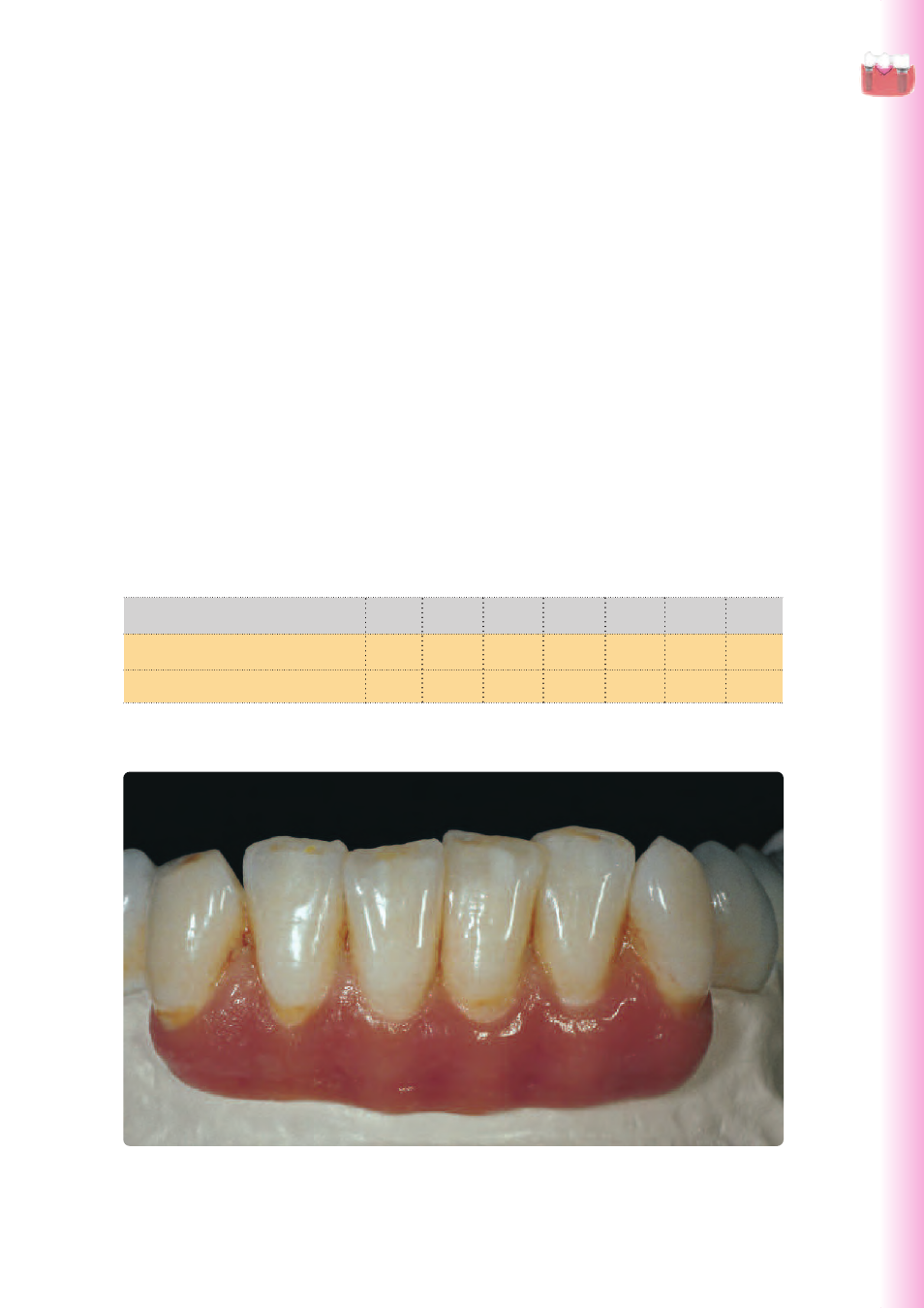Ivoclar Vivadent IPS e.max Ceram User Manual
Page 51

51
Completed restoration after Glaze firing
The dental lab work was carried out by
MDT Thorsten Michel, Schorndorf/Germany
Firing parameters for IPS e.max Ceram Gingiva – note the slow cooling!
Stain and Glaze firing
The gingival portions are characterized and glazed together with the tooth-shaded areas of the restoration. Stain firing is
conducted with IPS e.max Ceram Essence and Shades, while Glaze firing is carried out with Glaze powder or paste.
Depending on the situation, the firing cycles may be conducted together or separately. The firing parameters are identical.
Please observe the following procedure:
– Finish the restoration with diamonds and provide a true-to-nature shape and surface structure, e.g. stippling.
– Areas which should exhibit a higher gloss after Glaze firing (e.g. pontic rests) can be smoothed out and prepolished
using silicone wheels.
– In order to improve the wetting properties of the surface, rub the restoration with moist ceramic or pumice.
– The restoration must be free of dirt and grease. Avoid any contamination after cleaning the restoration with ultrasound
in a water bath or with a steam jet.
– Mix the pastes or powder with the IPS e.max Ceram Glaze and Stain Liquids (allround or longlife) until the desired
consistency is achieved.
– If shade adjustments on the gingival portions are required, the Gingiva Essence materials can be used.
– Evenly apply the glazing material to the entire surface of the restoration. Do not use any IPS e.max Ceram Glaze FLUO
on the gingival portions, since natural gingiva does not exhibit any fluorescence.
– Conduct Stain and Glaze firing according to the firing parameters.
– IPS e.max Ceram Add-On materials can be used for further adjustments (page 33).
IPS e.max Ceram
B
S
t
➚
T
H
V
1
V
2
Cut-Back and layering technique
°C/°F
min
°C/°F/min
°C/°F
min
°C/°F
°C/°F
Stain firing
403/
6:00
60/
725/
1:00
450/
724/
757
108
1337
842
1335
Glaze firing
403/
6:00
60/
725/
1:00
450/
724/
757
108
1337
842
1335
Gingiva
Technique
